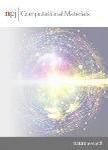Artificial neural network approach for multiphase segmentation of battery electrode nano-CT images
作者机构:Laboratoire de Réactivitéet Chimie des Solides(LRCS)CNRS UMR 7314Universitéde Picardie Jules VerneHub de l’EnergieRue Baudelocque80039Amiens CedexFrance Réseau sur le Stockage Electrochimique de l’Energie(RS2E)CNRS FR 3459Hub de l’EnergieRue Baudelocque80039Amiens CedexFrance MINES ParisTech–PSL Research UniversityCMMCenter for Mathematical Morphology35 rue Saint HonoréFontainebleauFrance Renault Technocentre78084GuyancourtFrance Advanced Photon SourceArgonne National LaboratoryLemontUSA Institut Universitaire de France101 Boulevard Saint Michel75005ParisFrance ALISTORE-European Research InstituteCNRS FR 3104Hub de l’EnergieRue Baudelocque80039Amiens CedexFrance
出 版 物:《npj Computational Materials》 (计算材料学(英文))
年 卷 期:2022年第8卷第1期
页 面:255-265页
核心收录:
学科分类:12[管理学] 1201[管理学-管理科学与工程(可授管理学、工学学位)] 081104[工学-模式识别与智能系统] 08[工学] 080203[工学-机械设计及理论] 0835[工学-软件工程] 0802[工学-机械工程] 0811[工学-控制科学与工程] 0812[工学-计算机科学与技术(可授工学、理学学位)]
基 金:The authors are grateful for the participation of the researchers in the workshop of NanOperando(GDR CNRS Nº2015)for the ground truth survey(2019/11,Energy Hub,Amiens,France) This research used resources of the Advanced Photon Source,a U.S.Department of Energy(DOE)Office of Science User Facility operated for the DOE Office of Science by Argonne National Laboratory under Contract No.DE-AC02-06CH11357
摘 要:The segmentation of tomographic images of the battery electrode is a crucial processing step,which will have an additional impact on the results of material characterization and electrochemical ***,manually labeling X-ray CT images(XCT)is time-consuming,and these XCT images are generally difficult to segment with histographical *** propose a deep learning approach with an asymmetrical depth encode-decoder convolutional neural network(CNN)for real-world battery material *** network achieves high accuracy while requiring small amounts of labeled data and predicts a volume of billions voxel within few *** applying supervised machine learning for segmenting real-world data,the ground truth is often *** results of segmentation are usually qualitatively justified by visual *** try to unravel this fuzzy definition of segmentation quality by identifying the uncertainty due to the human bias diluted in the training *** CNN trainings using synthetic data show quantitative impact of such uncertainty on the determination of material’s ***-XCT datasets of various battery materials have been successfully segmented by training this neural network from *** will also show that applying the transfer learning,which consists of reusing a well-trained network,can improve the accuracy of a similar dataset.



